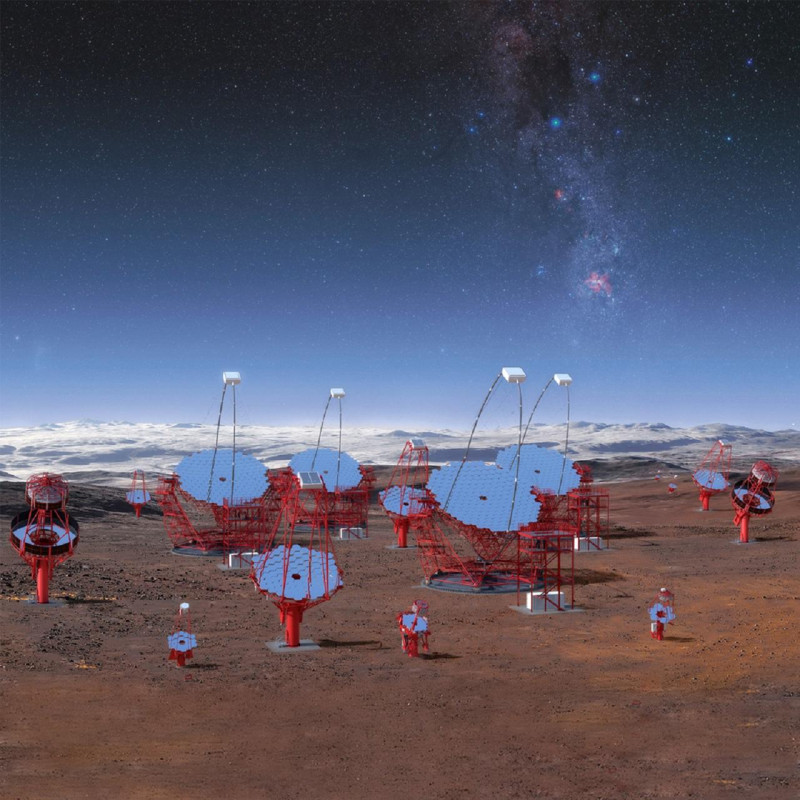CTA
Gamma-ray astronomy is on the verge of a phase transition. A guaranteed leap in sensitivity is to be expected from the upcoming Cherenkov Telescope Array (CTA), the global future gamma-ray facility planned to start full operation in the early 2020’s, after an envisaged construction phase starting in 2016. With CTA we will discover ten times more gamma-ray sources compared to existing facilities, probe extreme environments such as neutron stars, black holes, or relativistic jets, and we will investigate the origin and role of relativistic particles in the Universe. And who knows, we may even discover particles that make up dark matter!
For the first time in this field CTA will be operated as an open observatory allocating observation time to member-state astronomers strictly based on science perspective. The CTA consortium, more than 1000 scientists from 160 institutions around the globe, is currently preparing to construct 120 imaging atmospheric Cherenkov telescopes on two sites, one in the Southern hemisphere close to ESO's Paranal Observatory in Chile and one in the Northern hemisphere on the island of La Palma, Spain. The project has recently seen significant progress, with the selection of these two final site candidates, with the call for the project headquarters for a decision in November 2015, and with the start of a drafting group for the observatory founding agreement, to conclude in the spring of 2016.
CTA in the Netherlands is pursued by scientists from the Universities of Amsterdam and Nijmegen, with the University of Groningen having firm ambitions to join this effort. Supported by NOVA, The Netherlands Research School for Astronomy, and by an NWO research programme for astroparticle physics (WARP), the CTA instrumentation efforts in Amsterdam and Nijmegen are concentrated on the Small Size Telescopes of CTA which will cover the high-energy range of the observatory and the Camera Test Facilities, respectively.


